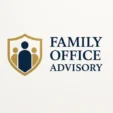Family Communication Protocols #
Family communication protocols define how information is shared, discussed, and escalated within a multi-generational family and its family office. Clear communication structures reduce misunderstanding, build unity, and enhance decision-making across governance, investments, philanthropy, and succession. These protocols also establish expectations around confidentiality, transparency, and participation.
Context & Importance #
UHNW families are often geographically dispersed, diverse in perspectives, and varied in involvement levels. Without structured communication, families risk misalignment, conflict, secrecy, and loss of trust—especially across generations. Communication protocols create a shared framework that supports a cohesive governance system and strengthens family culture and engagement.
Core Components of Communication Protocols #
- Information sharing guidelines: What information is shared, how frequently, and through which channels.
- Meeting structures: Family assemblies, council meetings, committee sessions, and annual retreats.
- Roles & responsibilities: Who speaks for the family, who represents the family office, and escalation pathways.
- Confidentiality expectations: Rules for protecting sensitive financial, legal, and personal information.
- Decision-making processes: Voting mechanisms, consensus-building, and documentation of outcomes.
- Conflict resolution: Protocols for addressing disagreements constructively.
- Crisis communication: Messaging during emergencies, reputation threats, or operational disruptions.
- Digital communication policy: Approved tools, encryption requirements, and etiquette expectations.
Communication Channels #
Families benefit from a combination of formal and informal communication channels to support transparency, collaboration, and relationship-building.
- Family meetings: Structured sessions covering governance, investments, philanthropy, and succession.
- Newsletters: Periodic updates summarizing performance, events, and family office actions.
- Secure portals: Platforms for document sharing, dashboards, and communications.
- Workshops & retreats: Educational and relationship-building events.
- Digital channels: Encrypted messaging platforms, approved email systems, and online voting tools.
- Individual check-ins: One-on-one sessions with family leaders or the family office.
Implementation & Best Practices #
- Establish a family communication charter: Document frequency, channels, and expectations for communication.
- Use consistent agendas: Provide structure and predictability for meetings.
- Leverage technology: Adopt secure, user-friendly platforms for meetings, voting, and document sharing.
- Promote transparency: Share relevant information openly while respecting privacy boundaries.
- Encourage participation: Ensure all generations and branches have a voice.
- Apply confidentiality rules: Reinforce that personal and financial information must be protected.
- Document decisions: Keep records of resolutions, next steps, and responsibilities.
- Conduct communication training: Strengthen listening skills, emotional intelligence, and constructive dialogue.
Common Challenges #
- Uneven participation or engagement across family members.
- Communication silos between branches or generations.
- Confidentiality breaches or misuse of sensitive information.
- Overreliance on informal communication channels.
- Unclear roles leading to mixed messages or duplicated efforts.
- Cultural differences and divergent expectations between generations.
See Also #
- Family Governance
- Family Constitution / Charter
- Next-Gen Education & Leadership Programs
- Crisis Management Framework
- Risk Management & Reporting




